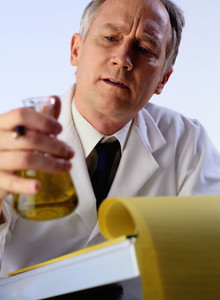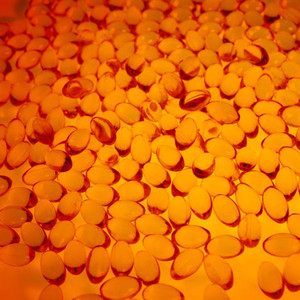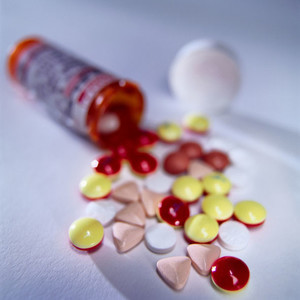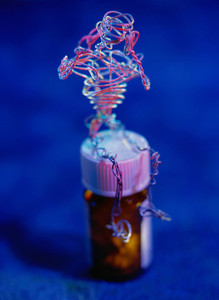The source of some of this confusion is due to authorities in various regions of the world defining terms differently and other instances due to a misunderstanding of the actual nature, characteristics, and method of research and manufacture of generic and biological products.
In an attempt to improve public understanding and avoid confusion, GaBI Online has decided to provide tables of definitions used in different countries or regions. Table 1 shows a glossary of the relevant terms for biosimilars as defined by WHO.
| Term
|
WHO Definition
|
| Active pharmaceutical ingredient (API)
|
The chemical substance responsible for a product’s effect. In this manual, it is called ‘substance’.
|
| Bioequivalence
|
Two pharmaceutical products are bioequivalent if they are pharmaceutically equivalent and their bioavailabilities (rate and extent of availability), after administration in the same molar dose, are similar to such a degree that their effects can be expected to be essentially the same.
|
| Brand name
|
Name given to a pharmaceutical product by the manufacturer, e.g. Valium is the originator brand name (also called trade name) for diazepam. The use of this name is reserved exclusively to its owner as opposed to the generic name, i.e. diazepam. Brand names may also be used for generic products; they are then often called ‘branded generics’. These brand names are different from innovator brand names. See generic medicine.
|
| Comparator
|
The term ‘comparator’ is used to mean ‘the pharmaceutical product with which the new product is intended to be interchangeable in clinical practice’. In any particular market, the comparator should be the first in this list that is available:
- the product for which efficacy, safety and quality have been fully established (often the innovator)
- a market leader that has been authorised for marketing after a process of assessment
- a market leader that is legally marketed but has not been assessed prior to marketing authorisation.
|
| Dispensing fee
|
Normally a fixed fee that pharmacies are allowed to charge per prescribed item instead of, or in addition to a percentage mark-up. The fee more accurately reflects the work involved in dispensing a prescription; a percentage mark-up makes profit dependent on the sale of expensive medicines.
|
| Dosage form
|
The administration form of the completed pharmaceutical product, e.g. tablet, capsule, suspension, injection. Also called ‘dose form’ or ‘dosing unit’.
|
| Drug
|
See medicine.
|
| Essential medicines
|
Essential medicines are intended to be available within the context of functioning health systems at all times, in adequate quantities, in the appropriate dosage forms, with assured quality and adequate information, and at a price the individual and community can afford. The WHO model list of essential medicines is intended to be flexible and adaptable to many different situations; the precise definition of the medicines that are regarded as essential remains a national responsibility.
|
| Excipient
|
Any component of a finished dosage form other than the claimed therapeutic ingredient or ingredients.
|
| Finished product
|
A product that has undergone all stages of production, including packaging in its final container and labelling.
|
| Formulation
|
The composition of a dosage form, including the characteristics of its raw materials and the operations required to process it.
|
| Generic medicine
|
A pharmaceutical product usually intended to be interchangeable with the originator brand product, manufactured without a licence from the originator manufacturer and marketed after the expiry of patent or other exclusivity rights. Generic medicines are marketed either under a non-proprietary name, for example diazepam or occasionally another approved name, rather than under a proprietary or brand name. However, they are also quite frequently marketed under brand names, often called ‘branded generics’. Many different branded generic products of the same medicine can be on the market in a country along with the originator brand product. The manual ‘Marketing Authorization of Pharmaceutical Products with Special Reference to Multi-source (Generic) Products (WHO/DMP/RGS/98.5)’ defines and uses the term ‘multi-source pharmaceutical product’ for generic products. This includes even an originator brand for which the patent has expired. This definition of a generic is used in some countries, but the manual distinguishes between originator brand, regardless of its patent status, and lowest-priced generic equivalents.
|
| Innovator brand
|
See originator pharmaceutical product/originator brand.
|
| International non-proprietary name (INN)
|
A common, generic name selected by designated experts for the unambiguous identification of a new pharmaceutical substance. The selection process is based on a procedure and guiding principles adopted by the World Health Assembly. INNs are recommended for worldwide use. The system was introduced by WHO in 1950 as a means of identifying each pharmaceutical substance or active pharmaceutical ingredient by a unique name that is universally accessible as public property (non-proprietary). It is often identical to the generic name, e.g. diazepam. A brand name (trade name) should not be derived from the INN name. More information is available on the WHO website: http://www.who.int/medicines/services/inn/en/index.html
|
| Interchangeable pharmaceutical products
|
Products within a therapeutic class but with different active ingredients are interchangeable if they have equivalent therapeutic effect.
|
| Medicine
|
Any dosage form containing a substance approved for the prevention and treatment of disease. The term ‘medicine’ is increasingly used to distinguish it from a drug as a substance that is misused. See also Pharmaceutical product.
|
| Multi-source product
|
See generic medicine.
|
| Originator pharmaceutical product/originator brand
|
Generally the product that was first authorised worldwide for marketing, normally as a patented product, on the basis of the documentation of its efficacy, safety and quality, according to requirements at the time of authorisation, e.g. Valium. The originator product always has a brand name; this name may, however, vary between countries. Some substances (e.g. prednisolone and isoniazid) are so old that no originator can be identified and the patent was probably never claimed.
|
| Patent
|
A title granted by public authorities that confers a temporary monopoly for the exploitation of an invention upon the person who reveals it, furnishes a sufficiently clear and full description of it, and claims this monopoly.
|
| Patient co-payments
|
Payments by patients of a fixed amount per prescribed medicine, even if reimbursed.
|
| Pharmaceutical equivalence
|
Medicines with identical amounts of the same active ingredient in the same dosage form and route of administration that meet the standards of strength, quality, purity and identity.
|
| Pharmaceutical product
|
Any medicine intended for human use, presented in its finished dosage form that is subject to control by pharmaceutical legislation (registered). A product may be sold under a brand name (e.g. Valium) or under the generic name (e.g. diazepam).
|
| Substance
|
See active pharmaceutical ingredient.
|
| Stability
|
The ability of an active ingredient or a drug product to retain its properties within specified limits throughout its shelf life. The chemical, physical, microbiological and biopharmaceutical aspects of stability must be considered.
|
| Trade name
|
See brand name.
|
If you are interested in contributing a research article in a similar area to the GaBI Journal, please send us your submission.








 0
0











Post your comment